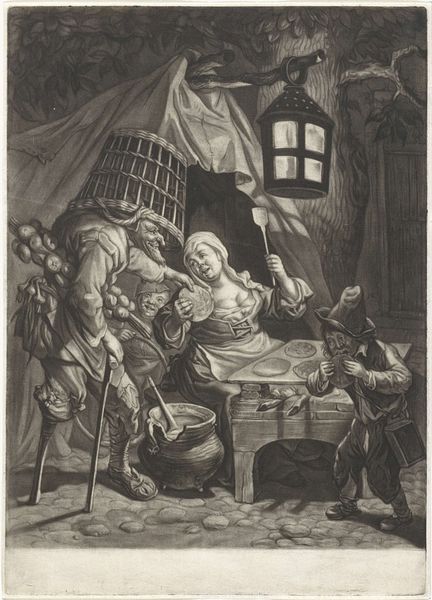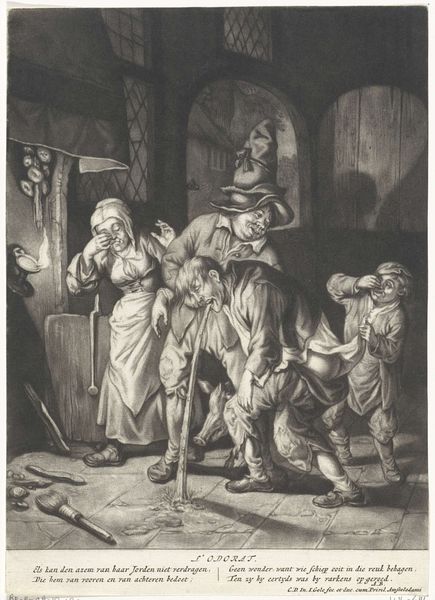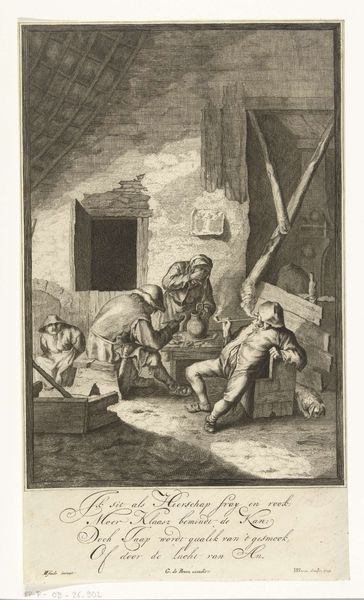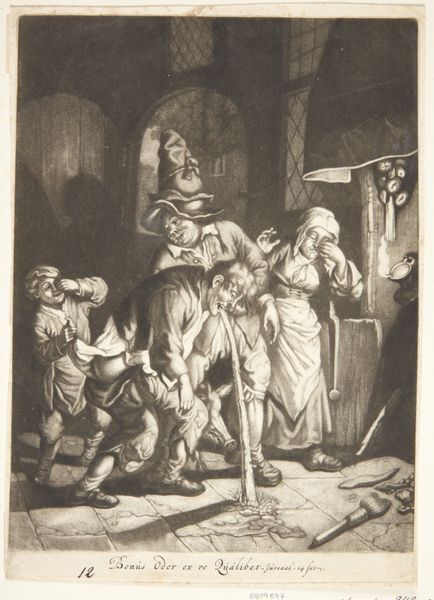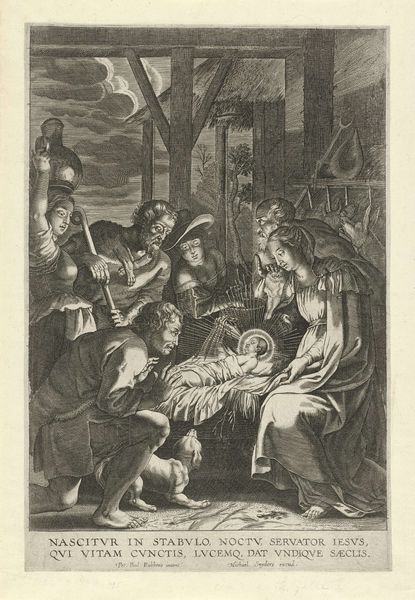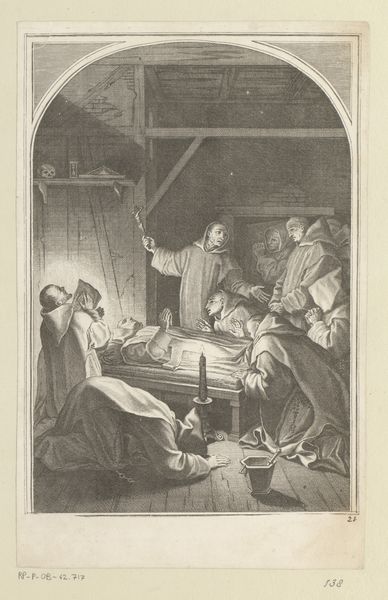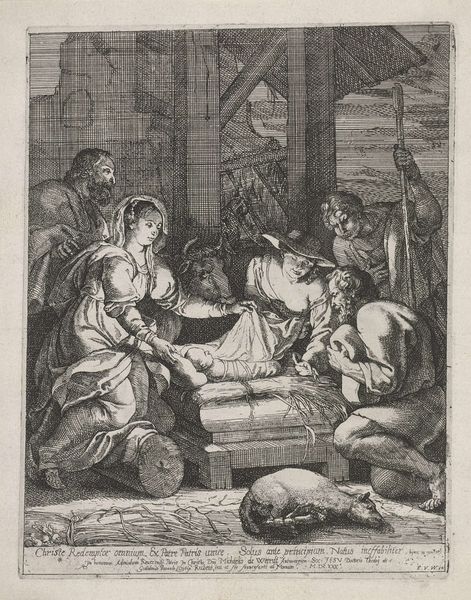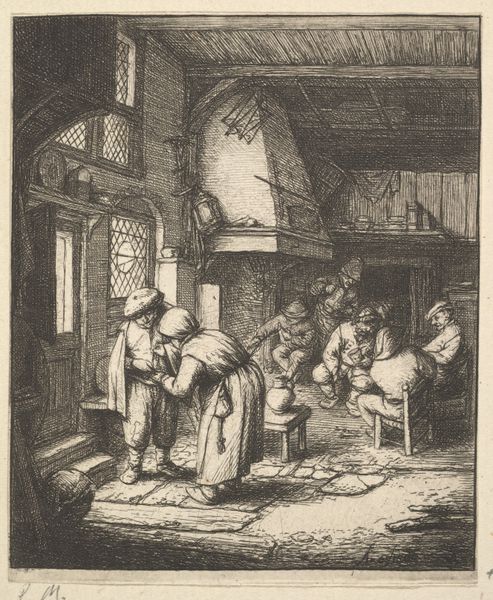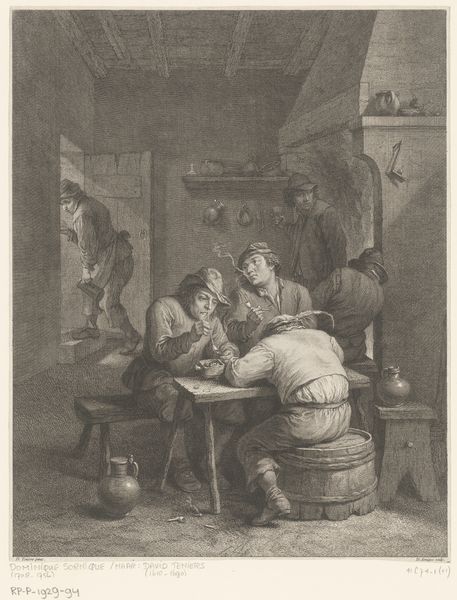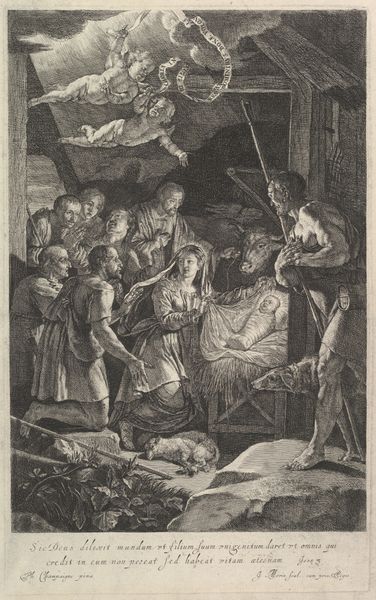
engraving
#
baroque
#
dutch-golden-age
#
caricature
#
old engraving style
#
caricature
#
figuration
#
line
#
genre-painting
#
engraving
Dimensions: height 249 mm, width 182 mm
Copyright: Rijks Museum: Open Domain
Curator: Cornelis Dusart's "De Smaak," or "The Sense of Taste," from around 1700, currently held in the Rijksmuseum. It's an engraving. Editor: It’s…peculiar. Immediately, the exaggeration of the figures grabs you. The composition feels a little chaotic, but maybe deliberately so? Curator: The image certainly captures the baroque fascination with caricature, which can reflect cultural anxieties around appetite, health, and class. Think about what taste meant during this era – it wasn’t merely a physical sensation. Editor: Ah, you're getting at the social context. Visually, the contrasting darks and lights draw your eyes all over. See how the single light source above casts long shadows, defining form while also contributing to a somewhat theatrical atmosphere? The use of line, particularly, to create this busy scene is very effective. Curator: The engraving style itself speaks volumes. Notice how Dusart uses specific marks to represent specific objects—how the engraver's style alludes to local proverbs or morals of the time. The openmouthed gestures are definitely theatrical. Perhaps it comments on social consumption of pleasures—especially in this period of the Dutch Golden Age? Editor: So, the image functions as a narrative or even a satire of society? From a formal perspective, the artist balances textures: rough clothing juxtaposed with smooth skin, for example. It provides layers and dimensions to the scene, complicating the overall reading. Even in monochrome, the range of values—from the brightest highlights to the deepest shadows—suggests a masterful handling of the medium. Curator: Exactly! Taste, in a broader symbolic sense, could imply discernment and judgment. So who is ‘tasting’ what? It's up for interpretation and social critique. Consider what meaning ‘taste’ had for its Dutch audience at this moment in history. Editor: Well, it certainly gave me something to chew on. Thanks to the dramatic values and exaggerations it remains, centuries later, a potent observation. Curator: It is. For me it still speaks, or perhaps shouts, from a cultural context of its time. It reminds us taste means different things at different times.
Comments
No comments
Be the first to comment and join the conversation on the ultimate creative platform.
